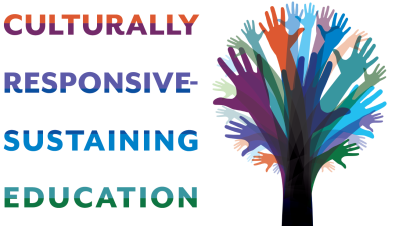Integrate Content and Practice to Create a Welcoming Classroom Environment
Article from Wayne White
A resource for Phase 3, Full Implementation of the Culturally Responsive-Sustaining Education Implementation Roadmap.
Resource: Welcoming School program
Classroom lesson materials can help teachers implement culturally responsive-sustaining instruction, but the materials need to provide rich content and encourage culturally responsive instructional strategies. When looking for lesson materials to support a welcoming and affirming classroom climate, I want materials that both encourage discussion of issues and topics around diversity and inclusion as well as detail instructional strategies for supporting those environments in the lesson itself. That is, both the content and how it is taught are important to consider.
Lessons from the Welcoming School program integrate attention to diversity and difference with teaching techniques that promote respect for others, prompt for student choice, and encourage discussion of ideas. The first lesson is called Design a Welcoming Toy Store for Everyone in Your Classroom. It begins by showing a video of child wondering why a store has separated the toy aisles for girls and boys as, the child exclaims, “Girls can like superheroes and boys can like princesses!” Students are then asked to think independently of a favorite toy and then work collaboratively to design a toy store for their favorite toys that is organized around categories other than gender, such as by activity or materials. The teacher instructions detail the lesson objectives, present the activities, describe how to group students, and provide tips for leading student sharing of ideas.
Another lesson, Love Makes a Family, encourages open discussion about how families and humans are different, seeking to prompt open talk about differences while interrupting bias and stereotypes. The lesson begins with a picture book read aloud that presents diverse families; there is a list of books from which the teacher can choose. While reading, the teacher prompts students to talk about families, describe what they notice, and share why it is important to learn about families that are different. Then, students are prompted to draw a detailed picture of their family on a paper that has the title, “Love Makes a Family.” Drawings can be discussed as a class, shared in the classroom, or posted as a part of a school display to provide a learning opportunity for others.
My colleagues and I have found that these lessons create opportunities for all students to feel safe and confident when sharing their ideas while also presenting on the importance of a diverse and inclusive school and community. Both of these lessons, as well as the other lessons in the Welcoming School program and the related resources for Welcoming all Families, help promote creating welcoming environments at an early age and providing guidance for how to teach in a culturally responsive-sustaining manner.
Wayne White is currently the Director of Social Justice for New York State United Teachers (NYSUT). Over his 22 years in education, he has been a social studies teacher, the president of the Bellport Teachers Association, and is consistently committed to the success of all students by giving educators the necessary resources to achieve that goal.






